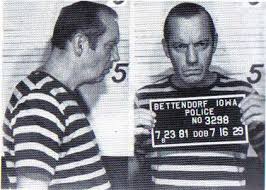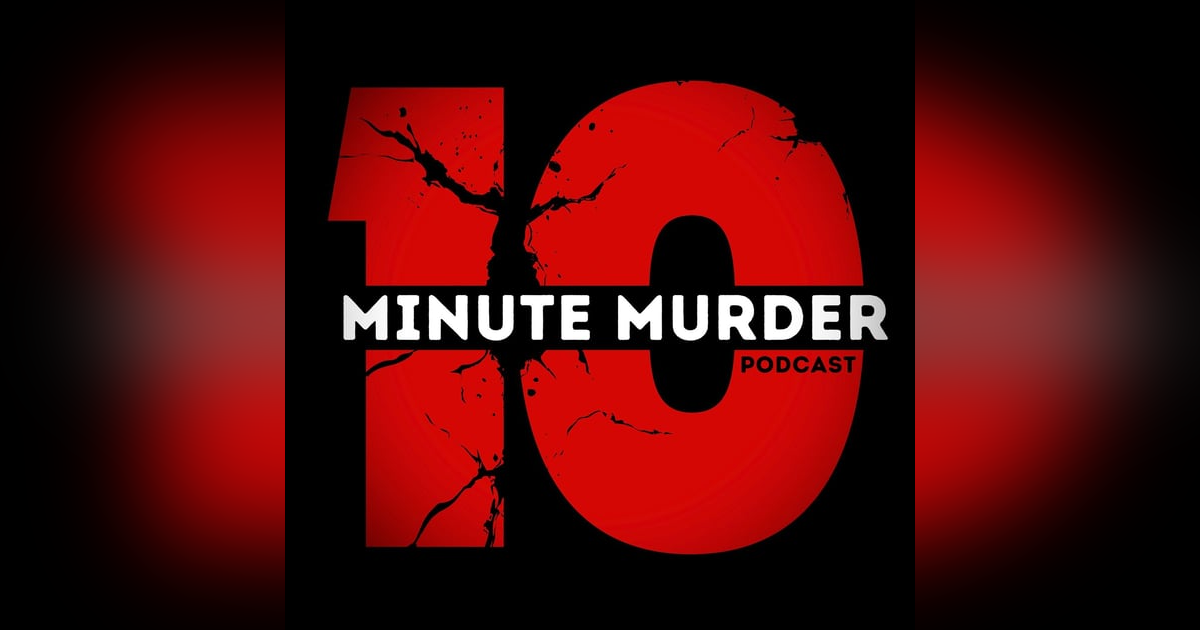The Serial Killer Who Begged for Help and Got Ignored

What happens when a young man writes a letter from prison begging for psychological help, and the system decides he's lying? Today we're talking about Charles Ray Hatcher - a man who practically gave authorities a roadmap to stop him, but nobody was listening. By the time they finally paid attention, sixteen people were dead.
When Violence Breeds Violence: The Charles Ray Hatcher Story
So here's the thing about serial killers - we all want them to be these mysterious, uncrackable enigmas. But sometimes the scariest part is how predictable their origin story actually is. Take Charles Ray Hatcher, born on July 16, 1929, in the tiny town of Mound City, Missouri. His father Jesse James Hatcher had a name that sounded like an outlaw legend, but he was really more like a small-town nightmare.
The Making of a Monster: A Childhood Steeped in Violence
Jesse James was an ex-convict, a bootlegger and an alcoholic who had perfected the art of making everyone around him miserable. When you're dealing with someone who can find money for booze but struggles to put food on the table, you know priorities are seriously warped. Jesse took his frustrations out on his wife and kids, turning their home into a war zone where Charles never knew when the next blow was coming.
School wasn't any better for Charles. While other kids were learning their ABCs, Charles was getting a different kind of education - one taught with fists. The bullying was relentless, but here's where things get interesting from a psychological standpoint. Instead of breaking completely, Charles eventually grew big enough to flip the script. The victim became the perpetrator, and he started dishing out the beatings himself.
This transformation is textbook cycle-of-violence stuff, but what happened next turned a bad situation into an absolute tragedy that would haunt the Hatcher family forever.
The Tragedy That Changed Everything
When Charles was about six years old, he and his brothers were doing something completely normal - flying a homemade kite around their neighborhood. They'd attached it to a copper wire, taking turns like kids do. His older brother Albert Allen had finished his turn and was passing the kite to Charles when disaster struck. The copper wire hit a nearby electrical line.
Albert was electrocuted in front of his younger brothers and died instantly. Talk about a traumatic core memory - watching your sibling die in a freak accident that could have easily been you. The Hatcher family never recovered from this loss, and honestly, who could?
Within a few years, Jesse had divorced his wife and moved on, because apparently abandoning your traumatized kids is easier than dealing with grief. Charles watched his mother cycle through failed marriages until she settled down with her third husband in St. Joseph. For a brief moment, Charles found some stability there, but stability wasn't really in his DNA at this point.
First Steps Into Crime: The Slippery Slope Begins
At eighteen, Charles landed a job driving trucks for a local logging company. Seemed like he might actually turn things around, right? Wrong. The job lasted exactly two weeks. One night, in what can only be described as peak bad decision-making, Charles got drunk and decided to "borrow" one of the company trucks. He disappeared into the night, probably thinking he'd return it before anyone noticed.
He did bring it back the next morning, but the damage was done. The company had already reported it stolen, and Charles officially became a criminal. He got convicted of auto theft and received a two-year suspended sentence. At this point, he could have learned his lesson and moved on with his life.
But Charles Ray Hatcher wasn't interested in making things easy for himself.
The Pattern Emerges: From Theft to Violence
Within months, he was back to his old tricks, stealing another car. This time he got two years in the Missouri State Penitentiary. He served about half his sentence, but prison didn't rehabilitate him - it just taught him new skills and introduced him to different kinds of violence.
Shortly after his release, Charles committed his first documented violent crime. He targeted a sixteen-year-old newspaper boy, chasing him down with a butcher knife and attempting to abduct him. Thankfully, the teenager escaped and reported Charles to police. This incident marked a crucial escalation - Charles had crossed the line from property crimes to predatory violence.
When police arrested him, he was driving yet another stolen vehicle, which landed him with a five-year sentence. It was during this prison stay that things got really dark.
The First Murder: A Fellow Inmate's Death
While Charles was doing time, a fellow inmate named Jerry Tharington was found raped and stabbed to death in the prison kitchen. Charles was the only kitchen worker missing during the following inspection, but there wasn't enough physical evidence to prove he was the killer. Still, prison authorities weren't taking any chances - they put Charles in solitary confinement.
From his cell, Charles wrote a letter to the penitentiary major, claiming he desperately needed psychological help. Here's the thing - many experts believe this was the last real chance to prevent what came next. If Charles had received proper treatment when he asked for it, some argue that sixteen people might still be alive today.
But the prison staff thought Charles was faking it, trying to get out of solitary. So he went untreated and was eventually released early. Big mistake.
The California Killing Spree: A Predator Unleashed
Once free, Charles headed to California and committed his first confirmed murder. In Antioch, he spotted a young boy riding his bicycle, lured him to a quiet creek, and strangled him with his bare hands. The first victim, 12-year-old William Freeman, had disappeared from Antioch, California, in August of that year.
With no connection between Charles and the victim, he remained free to strike again. He started using aliases and constantly moved around - classic serial killer behavior that made him nearly impossible to track.
The authorities had no idea who they were dealing with when they arrested him in San Francisco. A six-year-old girl had watched her friend get approached by an older man offering ice cream. The boy accepted and walked away with the stranger. Later, a man walking his dog found Charles in the act of beating and raping the child. The intervention probably saved the boy's life.
Charles told police his name was Albert Ralph, but his ID said Hobert Prater. This guy was collecting fake identities like baseball cards.
The System's Failed Attempts at Justice
The courts ordered psychological evaluations, but Charles had learned how to game the system. He claimed to hear voices, see things that weren't there, and even made fake suicide attempts. The doctors weren't buying it, though. Five times they sent him back to the courts, saying that he was mentally competent to stand trial.
When he was caught trying to escape from the hospital, the authorities had enough. Charles was transferred to San Quentin Prison and eventually stood trial over three years after his arrest. He was found guilty and recommended for transfer to maximum security.
But Charles wasn't done manipulating the system. He slashed his own wrists and got sent to a prison hospital instead. Eventually, he was released to a halfway house in San Francisco with orders to report nightly for medication. Five days later, he vanished.
The Missouri River Murders: Coming Full Circle
Over the following years, Charles used multiple aliases and committed numerous attacks, mostly targeting young boys. But it was his attack on eleven-year-old Michelle Steele that finally brought him down.
On July 29, 1982, 11-year-old Michelle Steele was reported missing from St. Joseph. The day after, her uncle found her nude, ravaged body on a bank of the Missouri River. She had been beaten, raped, and killed - the signature violence that had marked Charles's crimes for years.
Shortly after Michelle's murder, Charles voluntarily checked himself into the St. Joseph State Hospital under the alias Richard Clark, claiming to hear voices again. When hospital staff realized their new patient matched the description of the last person seen with Michelle, they called authorities.
The evidence against Charles was overwhelming. The nylon cords on his person matched those found around Michelle's body, his shoes matched prints at the scene, and his teeth matched bite marks on Michelle's skin. After years of evading justice, Charles Ray Hatcher was finally caught.
The Confession That Shocked Everyone
While awaiting trial for Michelle's murder, Charles slipped a note to a deputy that read: "Please call the FBI and tell them I would like to see them today. Very important case."
When FBI agents arrived, Charles dropped a bombshell. He confessed to having murdered a total of 16 people between 1969 and 1982. Even more shocking, he revealed that an innocent man named Melvin Lee Reynolds had already been convicted and was serving life in prison for one of his victims - Eric Christgen. Four years later, Reynolds was released when Charles Hatcher confessed to three murders to an FBI agent, including that of Eric Christgen.
Charles provided details about the killings that had never been made public and drew maps leading to burial locations of several victims. In exchange for this information, Charles wanted only one thing - to be put to death.
The Final Act: Taking Control One Last Time
When court proceedings dragged on longer than expected, Charles decided to take matters into his own hands. On December 7, 1984, jail officers found Charles hanging from electrical wire in his cell.
In the end, Charles Ray Hatcher got exactly what he wanted - control over his own fate. But his death left behind a trail of devastation that included sixteen murdered victims, countless traumatized families, and hard questions about how many times the system failed to stop a killer who practically announced his intentions.
The most haunting part of this story isn't the violence itself - it's how preventable so much of it was. From that first cry for help in prison to the multiple chances for proper intervention, Charles Ray Hatcher's killing spree represents a catastrophic failure of the very systems designed to protect society from people like him.
Sometimes the most terrifying monsters are the ones we create through neglect, and Charles Ray Hatcher is the perfect example of what happens when society looks the other way at exactly the wrong moment.





